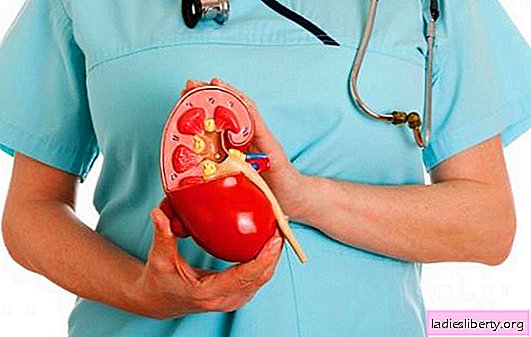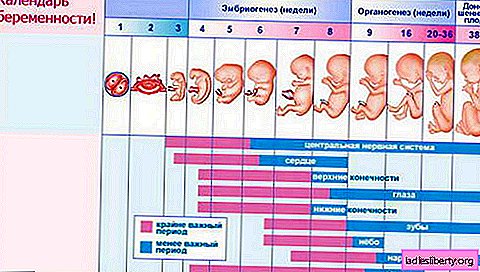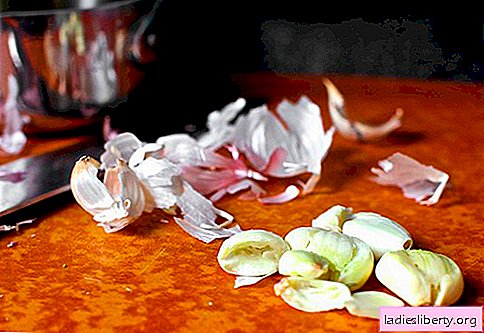
Pyelonephritis is a kidney disease in which parenchyma tissue is very inflamed. In most cases, this pathology is observed in women, but sometimes it also affects men. Let us consider in more detail the symptoms of pyelonephritis in men and methods of treating such an ailment.
Pyelonephritis in men: causes
Such factors can cause pyelonephritis in men:
1. Damage to the kidneys by viruses, bacteria or fungi.
2. Infection (E. coli, staphylococcus, etc.).
3. Violation of blood circulation in a sick kidney. By this is meant a spasm of the vessels or the presence of plaques in the vessels, due to which the blood circulation sharply worsens.
Moreover, the provoking factors for the development of pyelonephritis are:
1. Failures in the urinary system (it happens with reflux of urine into the kidney from the bladder or prostate adenoma in men).
2. A sharp decrease in immunity.
3. Strong hypothermia.
4. Treatment with certain groups of hormones.
5. Decreased immunity due to the development of diabetes.
6. Non-observance by a person of the rules of intimate hygiene.
7. Oncological pathologies.
8. Urolithiasis.
9. Insertion of a catheter into the bladder.
10. HIV infection.
11. Inadequate fluid intake.
12. Various pathologies of the structure of the kidneys.
13. Urinary incontinence.
14. The old age of men.
15. Prostatitis, especially in chronic form.
16. Various sexually transmitted diseases.
17. Conducting open kidney tests, because of which they got an infection.
Pyelonephritis in men: symptoms and signs
Pyelonephritis can be acute and chronic. Each of these forms of course is characterized by its symptoms.
In acute pyelonephritis, a man can observe the following signs of the disease:
1. First, body temperature rises. This is the first reaction of the body to the inflammatory process and the defeat of microbes.
2. There is paroxysmal pain in the lumbar region. Also, the pain can be aching or dull. Conventional analgesics are difficult to stop.
3. The patient often begins to worry about a headache. He becomes weak, pale.
4. There is frequent urination. In this case, a man may feel burning and pain. There are also false urge to urinate.
5. The patient is concerned about nausea, less often vomiting.
6. Often there is excessive sweating.
7. Darkening of urine.
8. The presence of blood in the urine is considered a dangerous sign of the disease.
9. The appearance of an unpleasant smell of urine indicates the active reproduction of pathogenic bacteria.
It is important to know that the symptoms of pyelonephritis may vary somewhat. It depends a lot on the particular type of bacteria that infected the kidneys.
Chronic pyelonephritis usually develops as a result of untreated acute inflammation of the kidneys. At the same time, the disease can occur monotonously for years, only occasionally exacerbating. Symptoms of this form of the disease are less pronounced.
The main signs of chronic pyelonephritis are:
1. Periodically occurring aching pain in the area of the kidneys.
2. Sudden changes in blood pressure (hypertension).
3. Urinary incontinence.
4. Pain in the lower abdomen.
5. Unpleasant sensations during urination (burning).
In more advanced cases, chronic pyelonephritis can cause a purulent abscess of the kidneys. In this condition, a person needs urgent hospitalization and the beginning of adequate treatment (sometimes in intensive care conditions).
Pyelonephritis in men: treatment features
When the first signs of pyelonephritis appear, a man is recommended to consult a urologist.
The general treatment regimen is aimed at:
1. Elimination of stones in the ureter, if they caused inflammation of the kidneys.
2. Relief of pain and inflammation.
3. Suppression of the activity of bacteria that hit the kidney.
If a person is worried about nausea, vomiting or severe intoxication of the body is observed, then the patient needs hospitalization. If the patient has a stable condition, then treatment can take place at home.
Traditional therapy for pyelonephritis is symptomatic. It provides for the following:
1. The appointment of drugs to stabilize blood pressure and body temperature.
2. The appointment of analgesics for pain.
3. The patient is shown compliance with bed rest for several days until the inflammation subsides.
4. To relieve the acute inflammatory process, drugs such as Metamizole or Diclofenac are prescribed.
5. The patient is shown abundant fluid intake.
6. It is advisable for a person to stay in a warm room and avoid hypothermia, especially if pyelonephritis is chronic.
7. Prescribing drugs to normalize kidney function (Furadonin).
8. Mandatory prescribed antibacterial drugs. They must be taken for at least seven consecutive days, after which repeated tests should be taken and, if necessary, prolong the therapy. Usually, drugs of the fluoroquinol and cephalosporins group (Ceftriaxone, Ampicillin) are prescribed for this purpose.
In the chronic form of pyelonephritis, the patient will need several courses of antibiotic therapy.
If the patient's condition is started and he has a purulent lesion of the kidneys, then in this case the patient is shown urgent surgical treatment and further medication. Also, to reduce the intoxication of the body, a person can be prescribed Regidron.
In addition, a very important link in the successful treatment of pyelonephritis is the observance of therapeutic nutrition. Such a diet has the following provisions:
1. The patient is recommended to limit the intake of salt, sour, fried and fatty foods.
2. To normalize the functioning of the kidneys, it is advisable for a person to drink a lot of fluids, among which should be green tea, a rosehip broth, dried fruit compote and water.
3. You should completely abandon the use of hot sauces and spices, spirits and coffee.
4. The use of preservation, salted fish, semi-finished products and sausages is prohibited.
5. The basis of the diet should be cereals on the water, boiled meat and fish, as well as mashed vegetables.
6. It is very useful to eat fermented milk products (low-fat kefir, cottage cheese, sour cream).
7. From vegetables you can eat baked pumpkin, zucchini, carrots, potatoes and beets.
Dietary nutrition must be followed throughout the treatment.
Upon completion of therapy, the patient is recommended sanatorium-restoring treatment.
Pyelonephritis in men: treatment, complications and prevention
In the absence of timely treatment, pyelonephritis can cause such complications:
1. Swelling of the kidney.
2. Disruption of the affected kidney.
3. Increased protein in the blood.
4. The transition of the disease into a chronic form.
5. Infection of the patient’s blood occurs if the bacteria that hit the kidney enter the bloodstream.
6. Abscess.
7. The development of inflammation in the urinary and reproductive systems of the patient.
To reduce the risk of developing pyelonephritis, men need to adhere to the following doctor's recommendations:
1. To give up smoking and drinking alcohol so that they do not lower immunity.
2. Every year you need to undergo a routine examination of the prostate. When pathologies are identified, they should be treated immediately so as not to trigger their condition.
3. When the first signs of pyelonephritis appear in your body, it is recommended to consult a doctor as soon as possible and conduct a diagnosis. The only way to avoid the transition of the disease into a chronic form.
4. Avoid hypothermia.
5. Timely treat urolithiasis.
6. Try to adhere to a diet or at least minimize the use of salt, fatty and fried.
7. Have a protected sexual relationship and one regular partner to minimize the risk of contracting sexually transmitted diseases.
8. Carefully observe the rules of intimate hygiene (take a shower twice a day, wear cotton underwear, etc.).
9. You can not delay urination for a long time.
10. Every day you need to drink at least two liters of clean water. This is necessary for the normal outflow of urine and saturation of the body with the moisture it needs.
11. Regularly take vitamin complexes.
12. Practice hardening, or at least regularly engage in physical activity.











